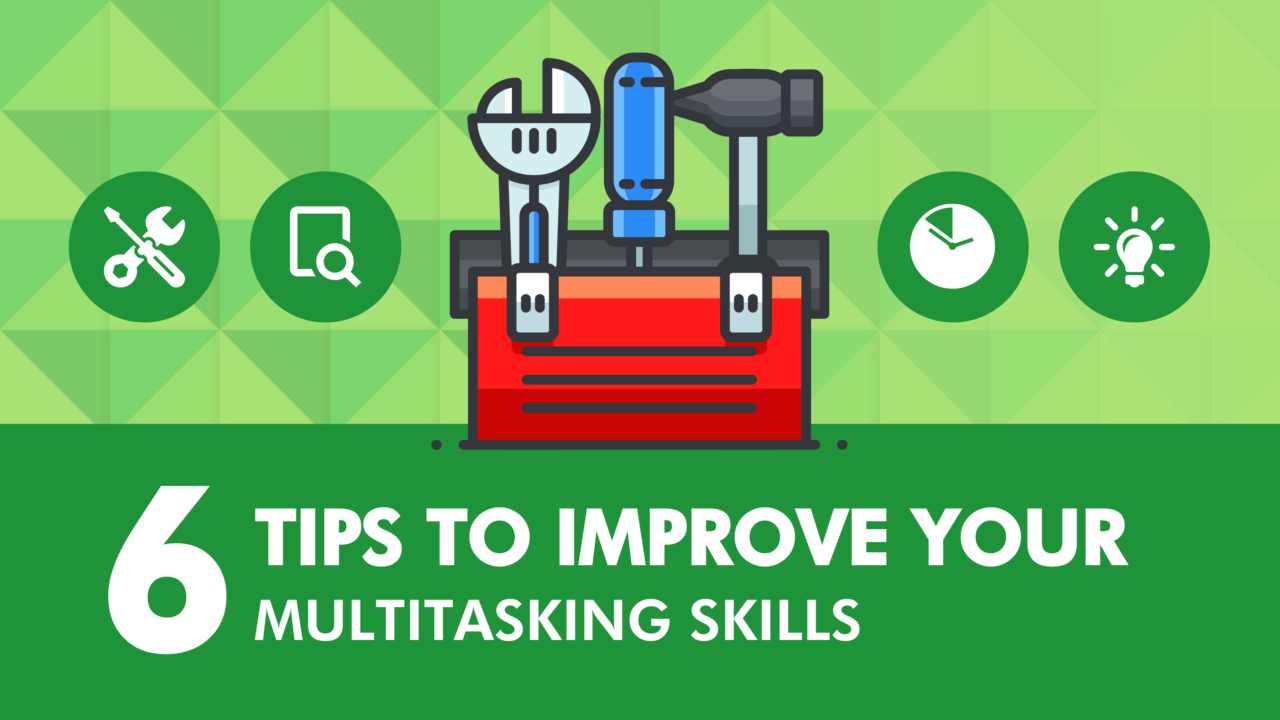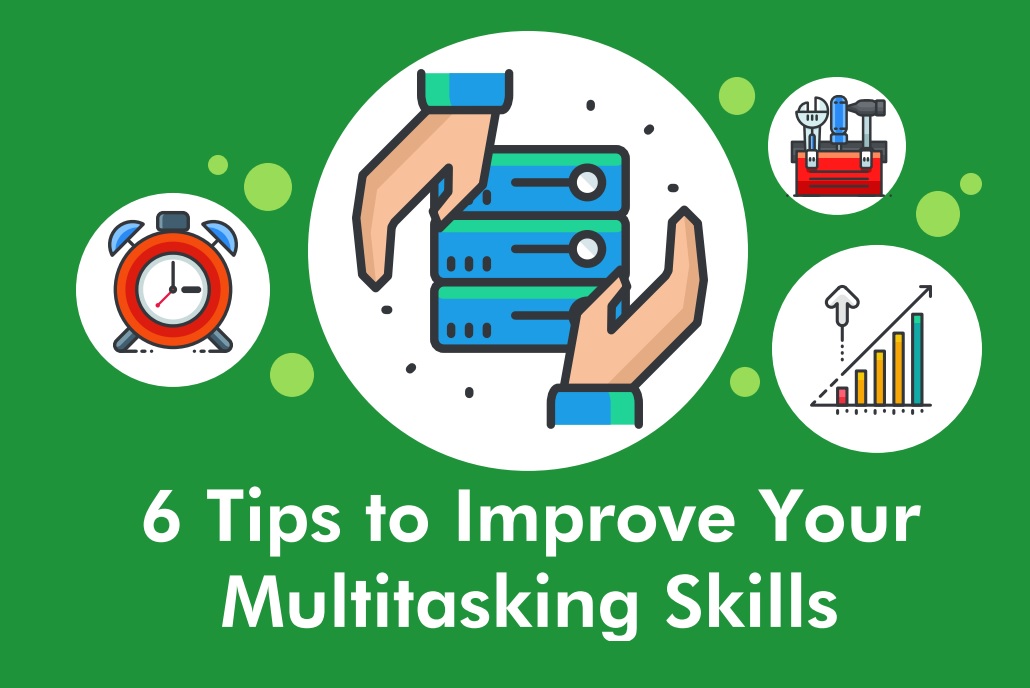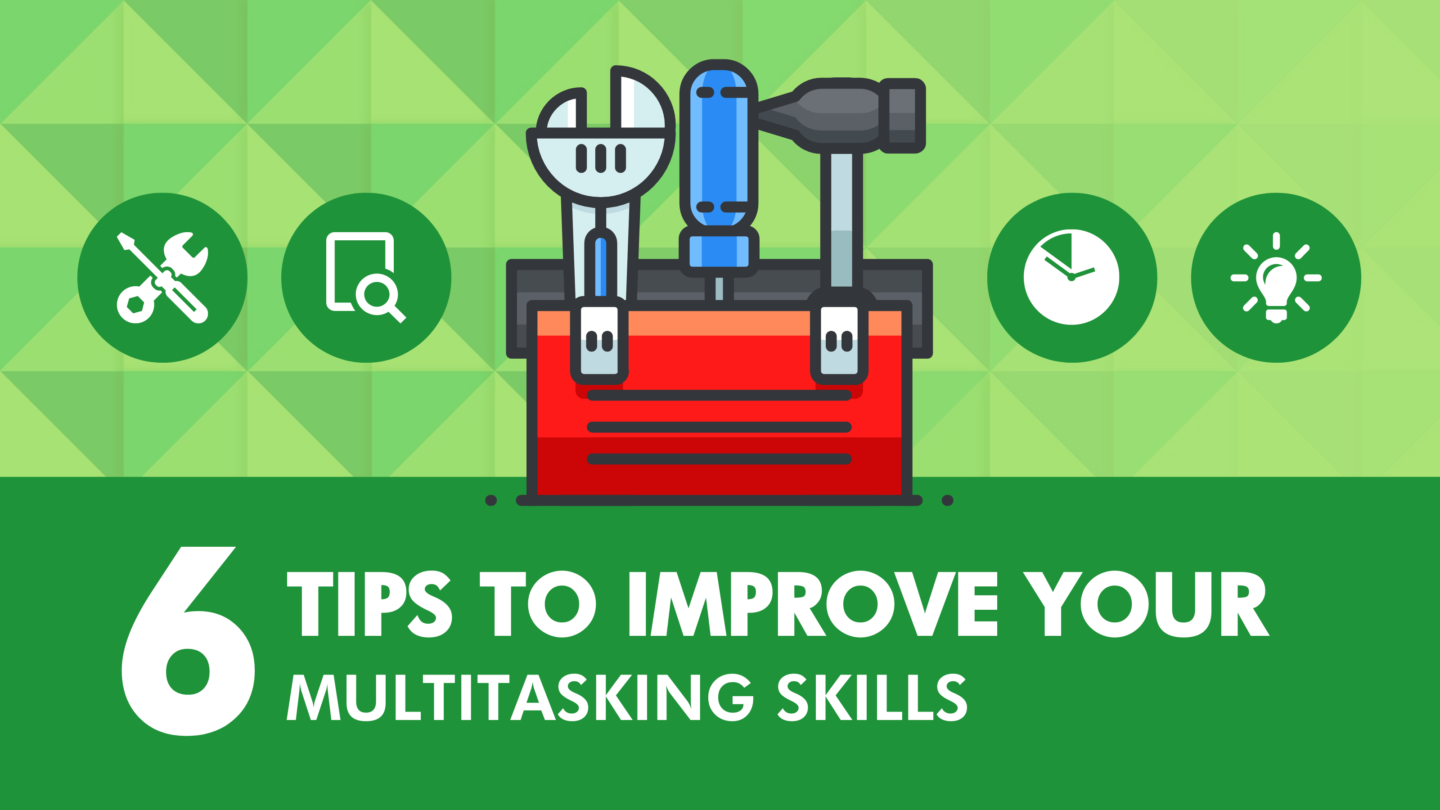
6 Tips to Improve Your Multitasking Skills
Nearly everyone is familiar with the term ‘multitasking’. Similarly, everyone, whether consciously or unconsciously, actually exercise their multitasking skills at any given time. Especially today, when leaders and employees alike are facing an influx of tasks and duties, and are encountering various challenges and distractions along the way, multitasking is a valuable skill that should continuously be improved upon in order to maximize productivity and success.
What is Multitasking?
Multitasking, to most people, is the act of juggling two or more tasks or activities at the same time. That definition, however, is technically wrong. The human brain cannot effectively focus on more than one item/task at a time – therefore, when someone is multitasking, they are actually switching focus between tasks so quickly that it presents itself as working on multiple things simultaneously.
Regardless of technical definition, one’s ability to effectively multitask continues to be an essential core competency. A common enough question during interviews is to ask for ‘examples of a time’ the potential employee has shown strength in this area. Multitasking can take many forms, including:
- Managing several social media accounts
- Listening to music while exercising
- Cooking dinner while talking on the phone
- Holding a conversation while driving
- Preparing multiple orders at once
- Answering phone calls and emails simultaneously
- Prioritizing emails to respond to in a customer service setting
- Signing for a delivery while helping a customer
- Serving drinks and presenting checks as a server
There are obviously many examples of multitasking skills – many in your day-to-day life, and many of the simplest of tasks you perform at your place of work.
The Downside of Multitasking
The assertion that using multitasking skills at work leads to higher productivity has been challenged many times, often being called a myth. While in some instances that may be the case, if you aren’t using your multitasking skills efficiently, there are many possible downsides.
- Split focus: if you’re working on more than one different task, the brain will be unable to devote all of its attention to any of them. This inevitably will result in errors being made, but could also lead to rework or longer time needed to complete just a single task.
- Partial attention: similar to split focus, if you haven’t honed your multitasking skills, trying to do more than one task at a time can lead to skimming incoming information. This too leads to missed data or inaccurately processed information, which of course leads to errors.
- Not prioritizing: one of the most important multitasking skills is the ability to prioritize tasks which is essential in remaining productive. If you aren’t prioritizing, you don’t have a clear idea of what you’re attempting to do, and you likely won’t be able to effectively complete multiple tasks within the same time period.
- Burnout: trying to do too many tasks at once can actually diminish your cognitive abilities. If you’re doing too much, you can get burned out – which results in diminished quality for all the tasks you’re attempting to complete and ultimately physical and / or mental exhaustion.
While there are potential cons to multitasking, most of them stem from using your multitasking skills inefficiently. This means that, the better you get at managing these skills, the less likely you’ll encounter the negatives. Which, of course, leads to:
In a hurry? Take the infographic to go!

Multitasking Skills
Send download link to:
6 Tips to Improve your Multitasking Skills
1. Make a to-do list
When tackling multiple projects at once, one of the first things you should do is create a to-do list. Many people wait until they’re in over their head to do so, but being able to organize everything you need to do is an essential multitasking skill. A list also ensures you don’t forget specific components of the tasks, and it also allows you to…
2. Prioritize
As mentioned above, one of the negatives of using your multitasking skills inefficiently is not being able to prioritize well, so it stands to reason that a way to improve them is to learn to prioritize. Figure out which tasks need what amount of time allocated to them, and which ones need to be done first. For example, an important meeting with your boss should likely be higher on your to-do list than a social media post. This also includes non-work related activities, as it is important to maintain a healthy work-life balance.
3. Group similar tasks
One of the factors that makes multitasking challenging is that you have to switch your focus back and forth between the different tasks. A good way to improve your multitasking skills is to start out by working on tasks that are relatively similar to each other – for example, if you have to make posts to several different social media platforms throughout your day, group those tasks together. The similarity will make it easier to shift focus and continue working without losing time.
4. Avoid distractions
This one is relatively obvious. If you want to be the most efficient multitasker you can be, you’ll need to avoid becoming distracted. Distractions vary depending on the person – many people listen to music while performing tasks, while some may find that too distracting.
Especially when so many employees are working from their homes now, avoiding distractions can be a huge challenge, in particular for those individuals accustomed to in-office work. There are several different practices you can engage in to avoid distractions at home, including:
- Get dressed like you were going to the office and announce to family members that you are “leaving for work now”
- Establish a set office
- Follow your usual work schedule and take breaks when you would have in-office
- Post your schedule
- Silence your personal phone and limit your use of it during working hours
5. Delegate
Although delegating a task to someone else isn’t technically you doing multiple things at once, it’s a way to get those tasks completed in the shortest possible time. If you know yourself and what you’re capable of doing in any given timeframe, you should prioritize the most important tasks and assign the rest to team members who will be able to effectively complete them.
6. Practice
Like anything else, your multitasking skills can be honed with practice. The more familiar you are with a specific activity, the easier it will be to do it almost automatically. You can only recognize the multitasking tips and skills that work best for you once you actually put them into practice. Try out various methods, and monitor how effective they are at keeping you on track and efficient when faced with multiple tasks at once.
Final Thoughts
Now more than ever, employees and leaders alike need to be able to manage several demands at one time, maximizing the output of successful results while still maintaining an efficient working pace and overall enthusiasm about what they are doing. Improving your multitasking skills is the best way to be efficient at work and to achieve the level of productivity your organization is striving for.




